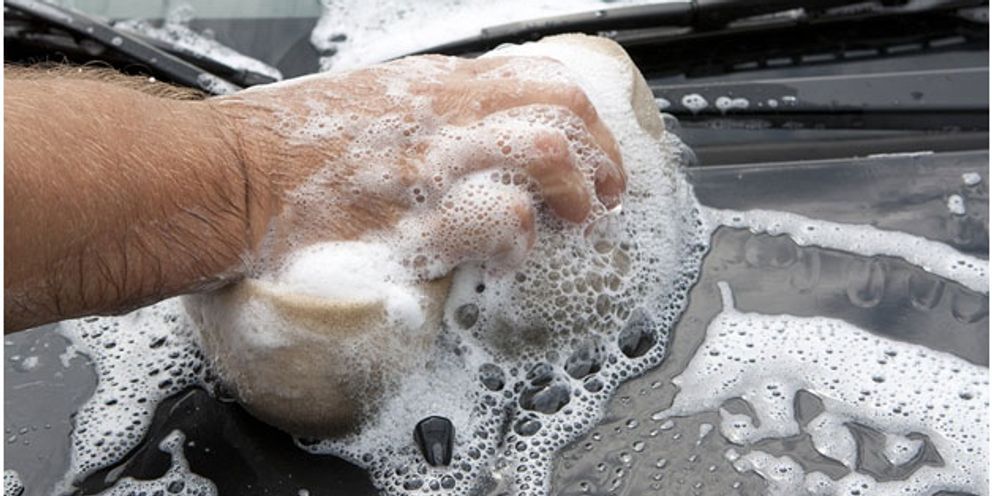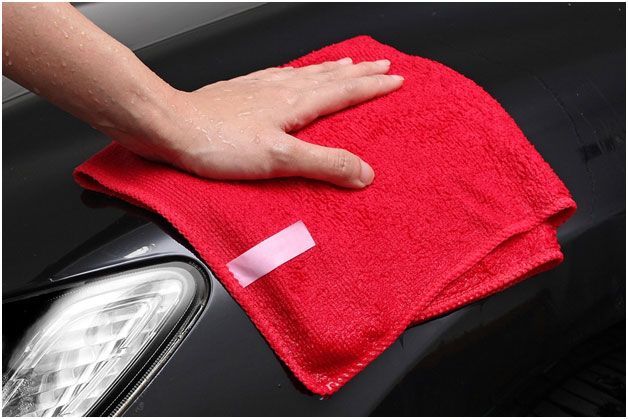
Best Car Wash Methods - How to Wash Your Car
Written By: John Linden
It’s spring and your car is carrying the grit and grime of winter. Or maybe it is summer, and the open roads beckon. You and your car have some adventures ahead, and you want to look your best.
However, your recent travels have left you with bugs on the dashboard, or maybe it’s dust kicked up from country roads. There are lots of ways to get your car cleaned.
Perhaps you could go to the local hand-wash station, where a team of youngsters in matching shirts will attend to your car’s needs. But that gets expensive.
You could pass through the automatic car wash attached to the gas station downtown. It’s a little more affordable, but it doesn’t always do a great job.
Around the corner there is a self-wash station. However, managing the awkward ceiling wand and hurrying through the various stages of washing can be stressful.
The most cost-effective and therapeutic solution are one in the same.
Spend a lazy sunny afternoon or evening washing your car by hand. Sure it is time-consuming, but the benefits are real. You save money, you have a sense of accomplishment, and you know that every inch of your car got the love and attention that your second biggest investment deserves.
The perfect day for cleaning is room temperature or higher. Don’t wash a car below freezing – this risks water freezing inside cracks or crevices, speeding up rusting and exterior damage. Washing when too hot causes rapid drying and leaves spots and streaks, ultimately wasting your time.

Right place, right products
In preparation for your car wash, you need to scout out the right location. Find a flat, shady patch of concrete or asphalt away from blowing dust or grass. You want to avoid grassy or dirt-covered spots which are liable to turn into mud as you go and undo your hard work.
Also, make sure you have access to a steady flow of clean water, preferably through a hose. A nearby faucet and a couple of buckets will work if a hose is not available.
Gather the materials that you will need in advance:
- car wash liquid, specially designed for washing a car
- lamb’s wool mitt or soft natural sponge designed for washing cars
- separate sponge or hand brush for tires
- chamois or soft terry cloth towel, or microfiber drying towel(s)
Be careful not to make these mistakes that can harm your car’s finish or leave your work looking streaky:
- don’t use dish soap or other cleaner NOT designed for cars
- don’t use bath sponges or loofahs just because they are nearby
- don’t use the same sponges for the tires that you use for the body of your car
- don’t use bath towels or other hand towels unless you can’t avoid it
If you are planning on doing a very thorough cleaning, you might want to gather some additional materials. Bug and tar remover contains special chemicals that will take care of, well, bugs and tar, without harming your car’s finish. Use a separate, disposable cloth for applying and removing the solvent.
You might also want to use a separate cleaner for your tires, with a separate bucket and brush.
Finally, many people like to purchase a separate rubber and vinyl conditioner for a final touch. Make sure to apply these as directed – only on the specific surface like sidewalls. Using these products in different places can lead to serious accidents.
Washyour carthe right way
Once you have your car in the perfect location, where it can sit without getting hot, get it ready for bath time. Make sure your windows are up all the way so water won’t get in. Save time in advance byplacingfront and back windshield wipers in their upright position away from the glass. If possible, retract or remove your antenna. Finally, remove your tourist and marathon magnets and place them in a safe spot.
First, give your car a good soft soak. Getting the whole body wet will soften up debris including dirt and bugs. If it is the first wash of the spring, and you live where road salt or beet juice is applied to roads, it is wise to take a hose to the underside too. You want to make sure that these corrosives are off your car.
It may be tempting to power scrub your car with the “jet” setting on your hose, but don’t do it. These power settings can cause scratches by pushing rocks or other sharp debris across your car’s surface. Instead, use a gentle shower setting on your nozzle and let the water loosen debris by itself. You will get the rest of it with your gentle sponge or mitt.
Now start by washing one area at a time. Rub the car in long straight strokes – circles can leave micro-abrasions that will be visible days later. Start from the roof and work top-down as much as possible, so your dirt naturally flows over still-dirty portions of the car. Rinse each section as you go.
As you’re working, monitor your bucket. If the water becomes dirty, make a new bucket of soap water – it doesn’t do any good to wash with dirty water, and you risk scratching your car’s finish.
Once the body is washed, move to the tires, using your special brush if necessary. Wash the tire, but avoid cleaning the metal parts behind the tire. These are the brakes and are made to get wet, but not to be washed.
Finally, open the doors and gently wash the metal parts on the inside of the door. These are the dusty portions that are not visible inside the car when the door is shut.
Dry your carthe right way
Several of the materials you gathered to wash your car weren’t for washing it at all. A commonly overlooked but very important part of washing your car is drying your car.
Simply allowing the air to dry your car means that your final finish will include streaks. These will be visible to everyone who sees your car, defeating the purpose of washing it. Also, streaks contain the same kinds of grime and particles that can damage your car’s surface. Using the right drying techniques can help protect your car.
Select one or more chamois, soft terry cloth towels, or microfiber towels. You can use a bath towel if you must, but it is definitely the last choice. Whenever possible, blot the water off instead of wiping. Some people like to use a soft squeegee to start this process, but it always should end with hand drying.
Blotting is preferable – set the towel down on a wet spot, press it down with your hands, then lift it. Move to a different spot and place the dry portion of the towel there. Wring it out between blots. By moving a towel in circles, one risks creating the same kinds of scratches as when using a sponge in circles.
After the wash
You’ve gotten in a good afternoon, and now your pride and joy is clean. It is a requirement to now show off your work.
Put the magnets back on, reattach your antenna, and lower the wipers into driving position. Roll down the windows, turn up your favorite song a little too loud on the stereo, and cruise the neighborhood. Remember when showing off your clean car to drive slightly slower than the speed limit.
Featured Image Credit:VintageBlue / Pixabay
In Post Image Credit: ninofficialphotography / Pixabay
Updated